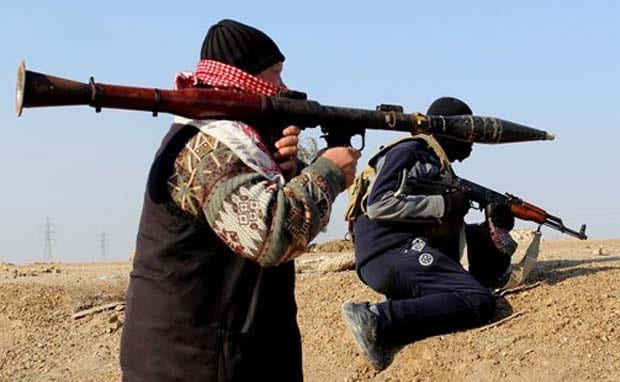
The horrifying images of a Jordanian pilot burned alive by the Islamic State group this week has put added pressure on the US to ensure rapid rescue operations for its partners.
US officials confirmed last month that the United Arab Emirates - nicknamed "Little Sparta" for its initial eagerness to enter the fray against Islamic State - had pulled out of the US-led air campaign over concerns about rescue operations.
According to a report in the New York Times, the UAE has demanded that the America relocate its US Combat Search and Rescue Team, currently based in Kuwait, closer to the conflict zone in northern Iraq.
Its concerns were triggered by the capture of Jordanian pilot Maaz al-Kassasbeh, and will only have been sharpened by the horrifying death depicted in the Islamic State video released this week.
Lt. Kassasbeh was captured in December after being shot down near Raqqa, the de facto capital of the Islamic State group in northern Syria, and a rescue operation came too slowly to save him.
His fate will be playing on the minds of pilots throughout the coalition, said a former French intelligence chief, speaking anonymously.
"Images like that certainly hurt morale," he said.
"Pilots are people like anyone else, not robots. They know they are taking risks flying over these hostile zones, but after this, they will think twice."
'Not a gentleman's affair'
General Gilles Desclaux, who was head of operations for France's air force until 2011, said the incident would undoubtedly play on pilots' minds but "they are psychologically prepared".
In his day, Mr Desclaux said, pilots wrestled with the possibility they might be ordered to drop a nuclear bomb - a task that meant "no hope of returning" - but that fear was something they were trained to ignore.
"For a while now, this war has not been a gentleman's affair. In the past, pilots who were shot down would be captured and placed in detention," said the former intelligence chief.
"All that is finished. Now, it's barbarity, especially in these asymmetrical wars. The pilots know that if they go down in the heart of the conflict, their lives are not worth much."
Since the Vietnam war, when captured troops faced horrific ordeals, the US military has made an absolute priority of rescue procedures, which has since spread to other modern armies.
Aircraft carry two positioning beacons that are automatically launched when a pilot ejects, and are picked up by surveillance planes that are constantly flying over the conflict zone.
As soon as the pilot is located, a race against time starts. Specialised air commandos are mobilised in helicopters, with back-up from fighter jets, but it can still take hours for them to reach the crash site.
The US often uses its V-22 Osprey hybrid aircraft - that land like a helicopter and fly like a plane - and it is these that the UAE has demanded be stationed nearer to the fighting.
In addition, patrol planes fire on anything that approaches the ejected pilot in order to protect him.
Pilots are trained to hide as best as possible during the day and move, if necessary, at night.
"Even before an air mission is carried out, the first thing we think of is the rescue operation. But doing that in a zone controlled by IS is extremely hard," the former intelligence chief said.
"A coalition partner can refuse to put its pilots in danger if there isn't a credible rescue procedure in place."
Track Latest News Live on NDTV.com and get news updates from India and around the world

